Affiliate disclosure: This post may contain affiliate links. Please see our Privacy Policy.
Dandelion oil is a versatile addition to your herbal medicine cabinet, and it’s so easy to make!

When spring arrives, dandelions fill our yard, covering our property with bright, yellow, cheerful flowers. It’s easy to think of dandelions as weeds, but they’re a helpful, medicinal flower, and one of the best ways to use dandelions is to learn how to make dandelion oil.
I learned about dandelion oil several years ago, and now, I make it every spring. Before my husband cuts the grass, my kids and I gather dandelions and make another batch of dandelion oil. There are so many ways to use dandelion oil, and with how many that appear on our property, we cannot let them go to waste.
Calendula is the most common medicinal flower that comes to mind when you think of skincare benefits, but dandelion blossoms contain many of the same properties as calendula. Dandelions are known for their detoxification, digestive, and hormonal benefits, and they also have properties that nourish and hydrate skin.
However, unlike calendula, dandelions grow every spring and summer nearly everywhere for free. That’s huge!
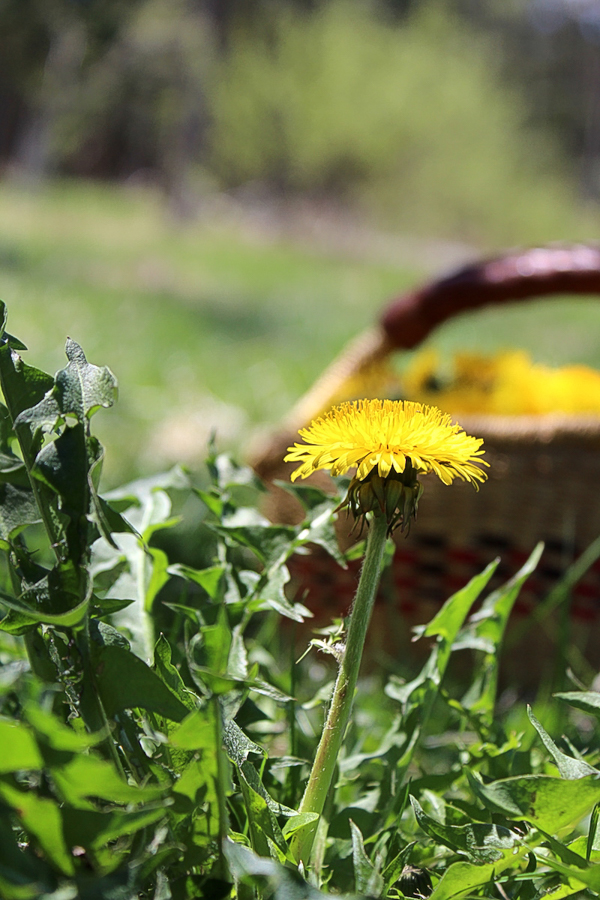
How to Harvest Dandelions
When using dandelions, you want to make sure you only harvest from unsprayed lawns.
Unfortunately, too many people view dandelions as useless weeds, and they try to kill them off instead of valuing them. It’s not safe to harvest dandelions from unknown properties or yards without asking if they use herbicides.
Harvest dandelions on a sunny day when the dew dries off of the plants. Only harvest the flowers that are full, open, and dry. Take a pair of clean scissors and cut the flower heads from the stem of the plant.
You need to fill an entire jar with dandelions. I make my dandelion oil in pint jars, but if you have a lot of time and dandelions, you might be able to harvest enough to fill a quart jar.
Once you harvest all the dandelions that you need, take them inside and wash them. Insects live inside these flowers, and you don’t want them to end up in your dandelion oil.
Next, you have to dry the dandelions, and that’s one of the most important steps. I spread my dandelions out on a screen or a baking sheet and leave the sheet somewhere warm and dry. It takes one to three days for dandelions to wilt and dry.
Another option is to spread your dandelions on a dehydrator sheet and let them dry on a low temperature. You’ll need to dehydrate the flowers for 12-24 hours.
(Fresh, wet dandelion flowers can make an infused oil go rancid, especially with the slow infusion method. If you don’t want to dehydrate the dandelion flowers first, use the fast infusion method described below. The warmth from the double boiler helps to drive off moisture and prevents the oil from going rancid.)
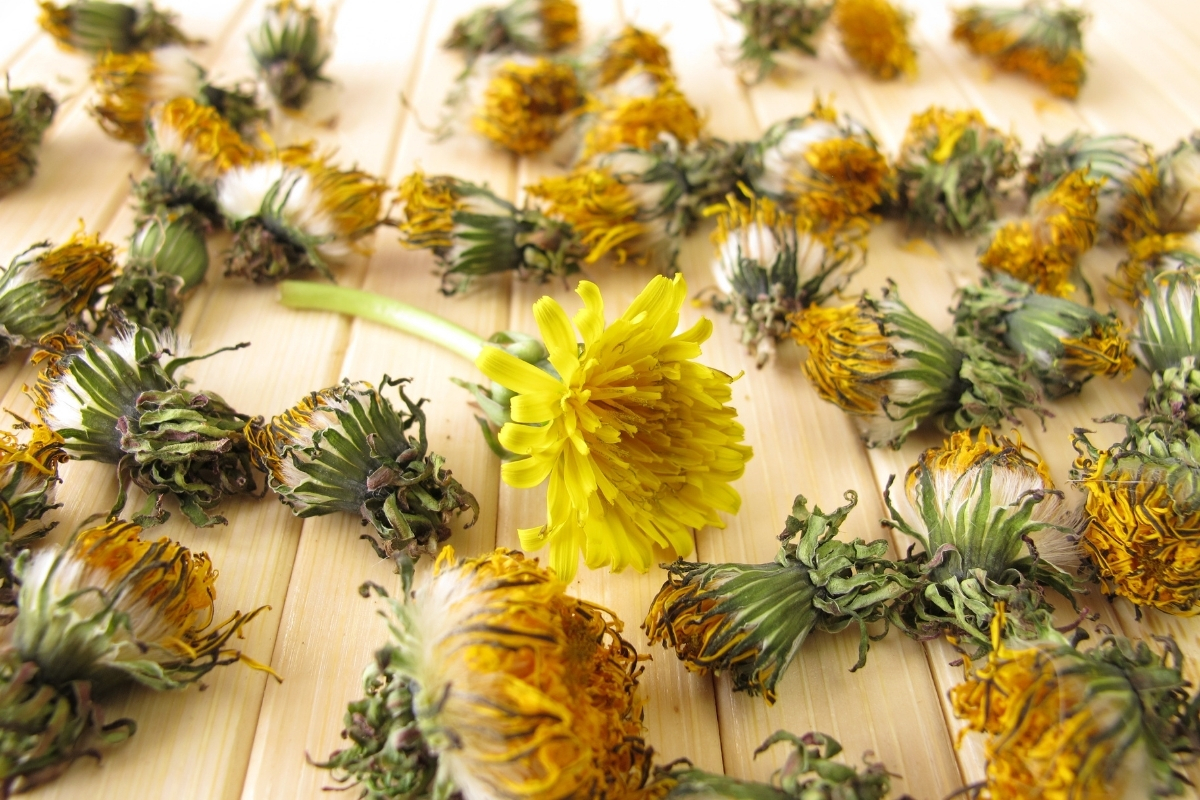
How to Make Dandelion Oil
There are two ways to make infused oils – a slow infusion or fast infusion. I prefer to use a slow infusion method because I feel like the properties infuse better, and we end up with a nicer final product. However, if you’re in a rush for whatever reason, the fast infusion method is valid.
The Slow Infusion Method
Place the dried dandelions into a clean glass jar, and then fill the rest of the jar to ¼ of the top with olive oil. You can use any olive that you like, but I prefer to use olive oil. Gently stir around with a butter knife to remove any air bubbles, and make sure all of the blossoms are under the oil.
Put the lid on the jar, and keep it on a sunny windowsill for two weeks. The longest that you can keep dandelions in oil is two weeks because they start to mold. Make sure you mark it on your calendar and pay attention.
After the two weeks are over, strain the blossoms from the oil through clean cheesecloth, and store the oil in a clean jar. It’s ready to use in one of the many ways to use dandelion oil.
The Fast Infusion Method
Many herbalists recommend avoiding the hot infusion method for dandelion oil, but it takes less time and reduces the chances of the herbs going moldy or rancid if the dandelion flowers are improperly dried.
Place your herbs and oil in your glass jar.
Set the glass jar into a pot filled ⅓ of the way with water and gently heat the water. You want to keep the water at about 100 degrees F (but no more than 120 degrees F). The goal is to speed the extraction process, not deep fry the herbs.
Be careful, the oil should be warm to the touch but nowhere near hot enough to burn your skin.
Turn off the heat once the temperature reaches 100 to 120 degrees. You can remove the double boiler from the stove and wrap it with a towel to keep it warm, or just periodically (every 4-6 ish hours) turn the stove back on to keep the mixture just warm.
(Obviously don’t do both, you’ll light your towel on fire…)
Allow the jar to warm for 24 to 48 hours before straining and using.
(For more details, read this guide on making herbal infused oils.)
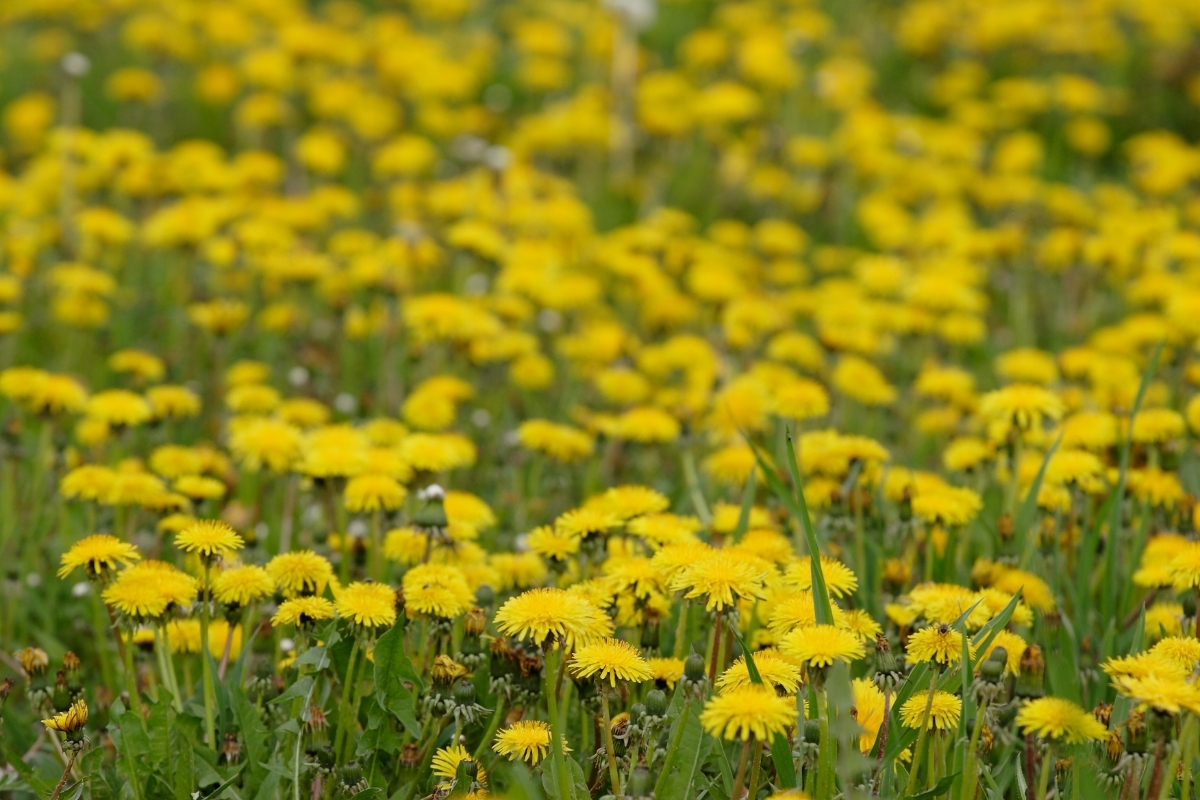
4 Tips for Making Dandelion Oil
If you’ve never made an infused oil before, dandelion oil is excellent for beginners. It’s one of the easiest, and it has so many uses. You’ll end up in love with making infused oils for medicinal purposes.
Here are a few tips to get you started.
- Always label your jars with a date; it’s easy to forget when you made an infused oil, and they expire after a year.
- When you infuse oil using the slow, solar method, check every few days for mold. If you see mold, it has to be thrown away. Be sure your dandelions are completely dry, as any moisture remaining in the flowers can lead to mold.
- Gently shake the jar every few days to help move the herbs around inside the oil.
- Store your prepared dandelion oil in a cool, dark place. If you store the infused oil properly, it will last around one year, but smell it before using. If it smells bad, the oil is rancid and needs to be tossed out.
7 Ways to Use Dandelion Oil
Now that you have jars of dandelion oil ready to use, here are some of my favorite uses for dandelion-infused oil. Be creative; you’ll find all kinds of ways to use this medicinal oil.
First Aid
If you or your children have cuts, scrapes, minor burns, sunburns, bug bites, or skin irritation, apply dandelion oil to the injury. Not only will it help the wound heal, but it’ll also nourish and moisturize your skin.
Diaper Rashes
Whether you keep it as an oil or make a salve with it, dandelion oil is great for treating diaper rashes. Many babies experience irritated, red, and inflamed diaper regions. Applying dandelion oil is the perfect way to get rid of this without using any conventional diaper rash cream from the store.
Make Dandelion Salve
If you want to make a dandelion salve, you need to have dandelion-infused oil. I make mine with beeswax and shea butter; there are so many uses for dandelion salve.
I like to use dandelion salve for its pain-relieving and anti-inflammatory properties. If you have achy joints or sore muscles, rub dandelion salve over the troublesome areas. Use it to moisturize dry, cracked, and itchy skin; it even works for chapped lips.
Use It as Massage Oil
Dandelion oil is great for those suffering from stiff joints or tired muscles. If you want it scented, add a few drops of your favorite essential oil, and use this as a massage oil.
Use It to Make Homemade Body Balm
Instead of using other oils when you make homemade body balm, replace it with your homemade dandelion oil. Dandelion body balm is perfect for dry, chapped skin, and it also heals damaged, inflamed areas on your body.
Make Homemade Soap
All homemade soaps require the use of oil, and instead of using plain olive oil or coconut oil, use your dandelion-infused oil instead! You’ll give your soaps some amazing medicinal benefits while still maintaining the proper ratios needed to make homemade soap.
Read more about how to make homemade soap here.
Use it as Facial Serum
It only takes a few drops, but you can use dandelion oil as a natural facial serum to help moisturize your skin after washing your face with a cleanser. Facial serums are expensive in the store, so save money and use your dandelion oil instead.
For facial serum, try using jojoba oil as the base for your dandelion-infused oil, as it’s especially nourishing.
Other Ways to Use Dandelions
Need a few more ways to use dandelions?
- How to Make Dandelion Tincture
- How to Make Dandelion Root Coffee
- Homemade Dandelion Wine Recipe
- Dandelion & Honey Ice Cream
- Dandelion Capers
- Dandelion Jelly
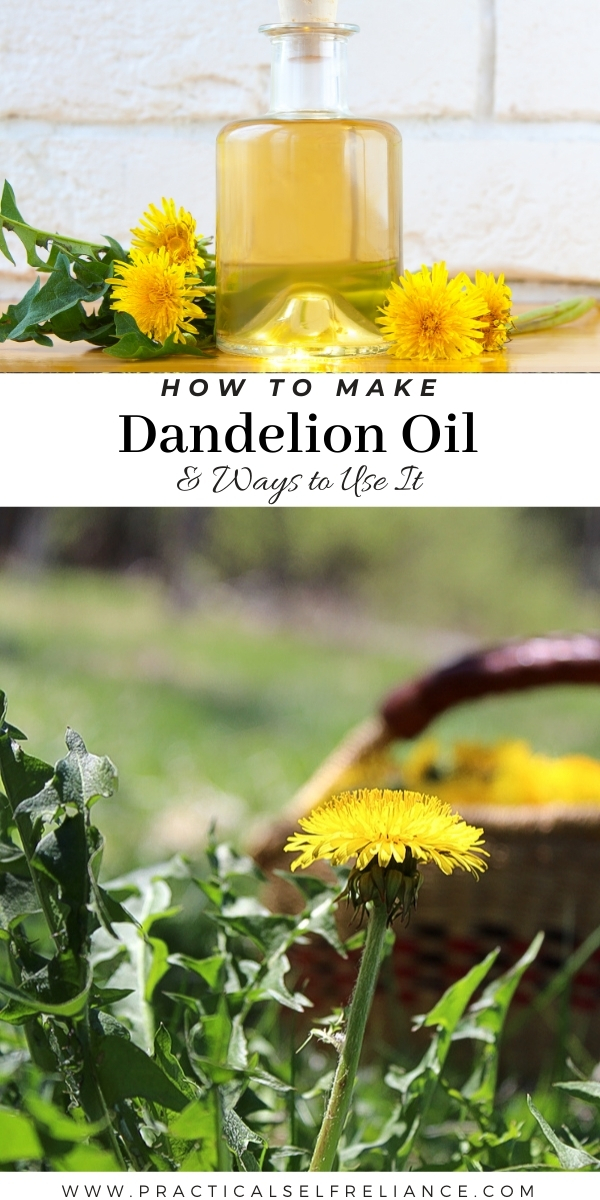


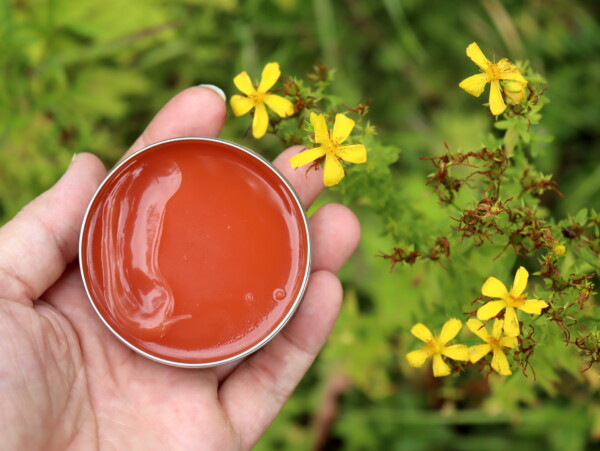

Hello, thank you for your good info : ) I made some dande oil, & didn’t dry enough… started to mold. I want to dispose of it, but how, what would be the best way? Thank you
I would probably just put it in the compost pile.
Thank you Ashley for the info, I’ll be reading more of your posts! Question: when you are making the Dandelion oil do you separate out and discard the green part of the flower head? Looking forward to this.
It is not necessary to separate the green from the petals for infused oil. If you’re using the petals for an edible application then you would want to separate the greens since they can be a bit bitter.
I infused dandelions recently but the oils got very dark is that normal all the images I see have a light golden color but mine has very darkish almost amber, I did use a cold pressed EVOO that has a slight green hue to it could that be the reason?
The type of oil used can definitely affect the final color of the oil.
Seems that whenever I dry dandelion flowers, they turn somewhat into fluff. I leave them whole and don’t plug off the petals
Yes, they can very easily turn to fluff. Using the whole flower heads is a great way to avoid removing all those petals.
Hi, I’m not sure I understand. What is the best way to dry without getting all the white fluff from the flowers? I used my dehydrator last year and they all turned white and fluffy with very little yellow flower left. Thanks 🙏
I leave mine to wilt overnight so that a majority of the excess moisture is removed and then infuse the oil. I like to either heat the oil during the infusion or cover with fabric or something else breathable to allow any remaining moisture to evaporate out.
I am trying to collect dandelion flowers to make my oil, but they close up after I lay them out to dry. Can I use them like that?
Yes, it’s totally normal for them to do that and they are totally fine.
I was infusing fresh dandelions in oil. I started them in April and kind of forgot about them until mid August. I strained it and noticed a horrible smell. Did the oil go rancid from the fresh dandelions? Does it need to be thrown out? Its not like anything I’ve smelled before. Terrible. Thanks
Yes, it definitely sounds like the oil went rancid. I would throw it out. Unfortunately there isn’t much you can do to save it.
Hey! I’m really not sure where to gather dandelions that haven’t been sprayed. Would they be safe to pick this spring from somewhere that was sprayed last summer? Thanks, soaking up all this wonderful info you’re sharing!!
I personally would not pick from somewhere that has been sprayed. I don’t know the specifics on how long it stays in the soil so I can’t say the exact time period to wait but I would wait several years. It may take a little work to find a place that isn’t sprayed but it’s well worth it.
I use my yogurt maker to infuse the dandelions. I keep it in the maker for 3 days. Turns out wonderful. I use an old pickle bottle to Infuse my oils. Works great. Thank you for your post. Carol
That sounds like a great way to infuse your oils. Thanks for sharing.
I just discovered your blog and I am IN LOVE!
As our world becomes more and more technologically advanced, I believe it is wise to remember our roots and to learn practice self-reliance.
Thank you for sharing your wealth!
<3
J
We agree with you 100%. We’re so glad that you are enjoying the blog.